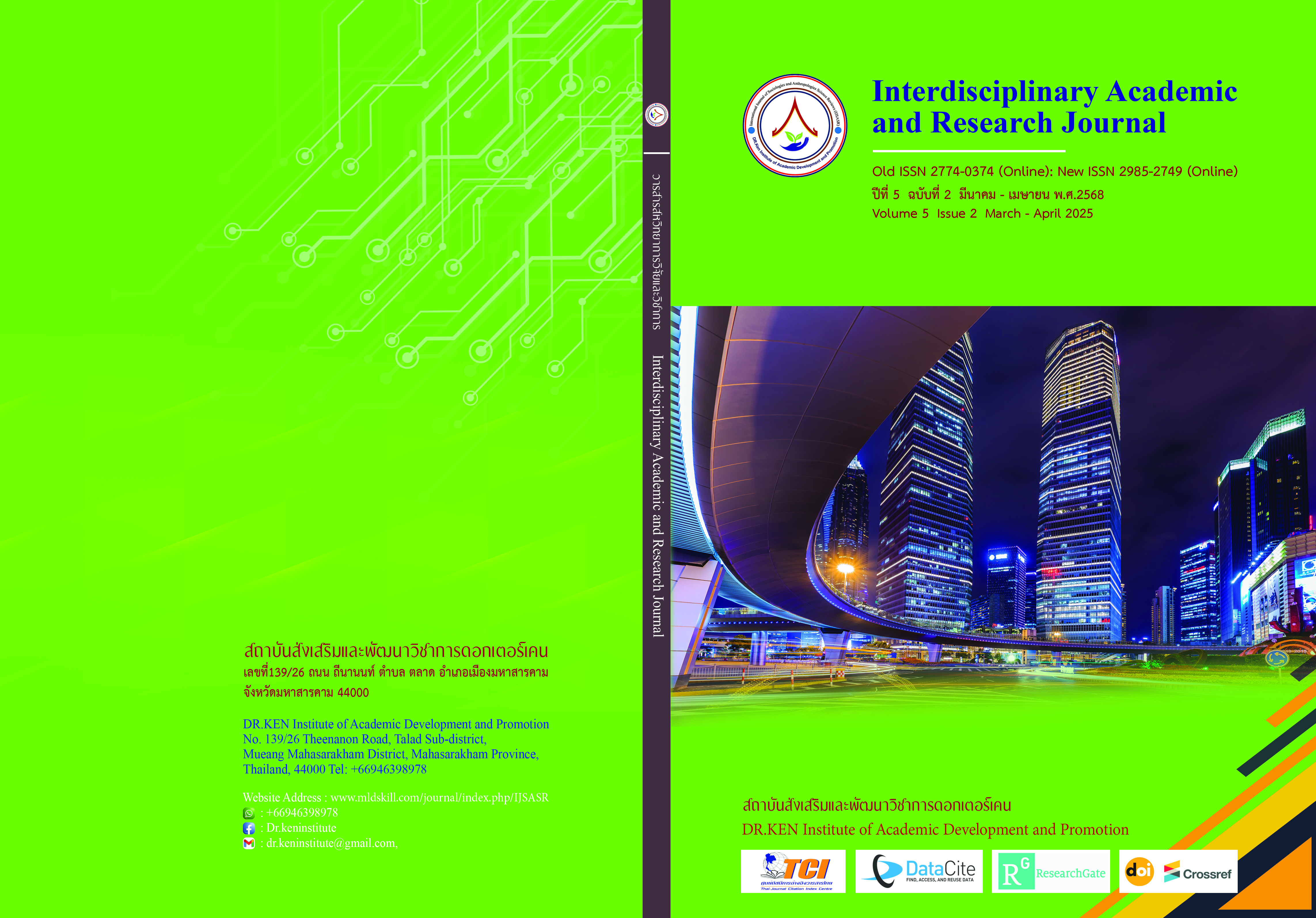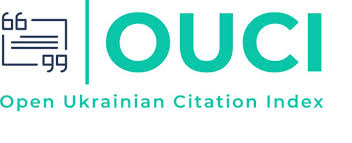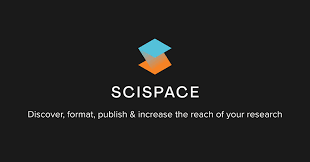Relationship of the Influence of Creative Leadership of Administrators on the Achievement of Students in Learning Science Under the Secondary Educational Service Area Office Samut Prakan With Teacher Competency as a Mediator Variable
DOI:
https://doi.org/10.60027/iarj.2025.282523Keywords:
Creative Leadership, Teacher Competencies, Science Learning AchievementAbstract
Background and Aims: Creative leadership is therefore essential for the development of teachers and educational personnel, enabling them to perform their duties and carry out activities in the teaching profession effectively. This, in turn, contributes to the improvement of students' learning outcomes. The purposes of this research are (1) to study the level of creative leadership of school administrators, teacher competencies, and student achievement in secondary schools in Samut Prakan Province; (2) to examine the relationship between the creative leadership of school administrators, teacher competencies, and student achievement in secondary schools in Samut Prakan Province; and (3) to investigate the influence of creative leadership on science learning achievement among students under the jurisdiction of the Samut Prakan Secondary Education Service Area Office, with teacher competencies as a mediating.
Methodology: The sample consisted of 210 science teachers under the Samut Prakan Secondary Education Service Area Office. The sample size was determined using the Krejcie and Morgan table and selected through stratified sampling, with school size as the stratification criterion, followed by simple random sampling. The data collection tool was a questionnaire using a five-point scale with a content validity index ranging from 0.60 to 1.00 and an overall reliability coefficient of 0.85. The reliability coefficient of the creative leadership questionnaire is .87, the reliability coefficient of the teacher competency questionnaire is .89, and the reliability coefficient of the science learning achievement questionnaire is .86. The statistics for data were analyzed using mean, standard deviation, Pearson correlation coefficient, and Path analysis.
Results: The finding of this research found that 1) the levels of creative leadership of school administrators, teacher competencies, and student achievement in secondary schools in Samut Prakan Province were found to be high in all aspects.2) the relationships between the creative leadership of school administrators, teacher competencies, and student achievement in secondary schools in Samut Prakan Province were statistically significant at the 0.05 level for all variables studied, with Pearson’s correlation coefficients indicating significant correlations. 3) The influence of creative leadership on science learning achievement among students, with teacher competency as a mediating variable, was found to be significant. Science learning achievement was influenced both directly and indirectly by two causal variables: creative leadership and teacher competencies, with statistical significance at the 0.001 level.
Conclusion: The study found that creative leadership and teacher competency have both direct and indirect influences on the variable of learning achievement. Teacher competency can explain up to 77.40% of the science learning outcomes. Creative leadership has a direct and significant effect on teacher competency, causing an increase or decrease in teacher competency in response to changes in creative leadership. This may be because creative leadership is a key factor that directly impacts the improvement of student learning outcomes, especially through the development of teacher competency.
References
กรองทิพย์ นาควิเชตร. (2551). ภาวะผู้นำแบบสร้างสรรค์เพื่อพัฒนาคุณภาพการศึกษา.วารสารศึกษาศาสตร์มหาวิทยาลัยขอนแก่น, 31(4), 9–18.
กระทรวงศึกษาธิการ. (2560). ตัวชี้วัดและหลักสูตรแกนกลาง กลุ่มสาระการเรียนรู้วิทยาศาสตร์และเทคโนโลยี (ฉบับปรับปรุง พ.ศ. 2560) ตามหลักสูตรแกนกลางการศึกษาขั้นพื้นฐาน พุทธศักราช 2551. กรุงเทพฯ: ชุมนุมสหกรณ์การเกษตรแห่งประเทศไทย.
กิตติกาญจน์ ปฏิพันธ์. (2555). โมเดลสมการโครงสร้างภาวะผู้นำเชิงสร้างสรรค์ของผู้บริหารสถานศึกษาอาชีวศึกษา. วิทยานิพนธ์ปริญญาดุษฎีบัณฑิต: มหาวิทยาลัยขอนแก่น.
ณัฏฐกิตติ์ บุญเก่ง. (2565). ภาวะผู้นำเชิงสร้างสรรค์ของผู้บริหารสถานศึกษากับสมรรถนะครูในสังกัดสำนักงานเขตพื้นที่การศึกษาประถมศึกษาปัตตานี เขต 2. วิทยานิพนธ์ปริญญาครุศาสตรมหาบัณฑิต: มหาวิทยาลัยราชภัฏยะลา.
ณิชกุล ชุ่มแก้ว. (2565). การพัฒนาสมรรถนะครูเพื่อการยกระดับผลสัมฤทธิ์ของโรงเรียนเคียนซาพิทยาคม อำเภอเคียนซา จังหวัดสุราษฎร์ธานี. วิทยานิพนธ์ปริญญาครุศาสตร์มหาบัณฑิต: มหาวิทยาลัยราชภัฏสุราษฎร์ธานี
ธิติสุดา แก้วหาญ และทนงศักดิ์ คุ้มไข่น้ำ. (2564). ภาวะผู้นำเชิงสร้างสรรค์ของผู้บริหารสถานศึกษาที่ส่งผลต่อสมรรถนะครูสังกัดสำนักงานเขตพื้นที่การศึกษามัธยมศึกษาหนองคาย.วารสารการการพัฒนาการเรียนรู้สมัยใหม่. 6(4), 164-175.
นคร ชูสอนสาย. (2565). ภาวะผู้นำเชิงสร้างสรรค์ในยุคชีวิตวิถีใหม่ของผู้บริหารสถานศึกษา สังกัดสำนักงานเขตพื้นที่การศึกษามัธยมศึกษา กรุงเทพมหานครเขต 1. วิทยานิพนธ์ปริญญาการศึกษามหาบัณฑิต: มหาวิทยาลัยธุรกิจบัณฑิตย์.
นงค์นุช จันทร์สัย. (2565). การศึกษาภาวะผู้นำเชิงสร้างสรรค์ของผู้บริหารโรงเรียนในกลุ่มศูนย์พัฒนาคุณภาพการศึกษา ตำบลแม่นาวาง สังกัดสำนักงานเขตพื้นที่การศึกษาประถมศึกษาเชียงใหม่ เขต 3. วิทยานิพนธ์การศึกษามหาบัณฑิต: มหาวิทยาลัยพะเยา.
บุญชม ศรีสะอาด. (2553). การวิจัยเบื้องต้น. พิมพ์ครั้งที่ 8. กรุงเทพฯ: สุวีริยาสาส์น.
ปาริชาติ ปานศรี, นวลจิตต์ เชาวกีรติพงศ์ และ ดวงเดือน สุวรรณจินดา. (2563). ผลการจัดการเรียนรู้แบบสะเต็มศึกษาที่มีต่อผลสัมฤทธิ์ทางการเรียนวิทยาศาสตร์ และความสามารถในการประยุกต์ใช้ความรู้ทางวิทยาศาสตร์ของนักเรียนชั้นมัธยมศึกษาปีที่ 1 โรงเรียนวัดพระประโทณเจดีย์ จังหวัดนครปฐม. Sisaket Rajabhat University Journal. 16 (3), 1-14.
พิษณุ พิพรรธคุณ และอำนวย มีราคา. (2566). ภาวะผู้นำเชิงสร้างสรรค์ของผู้บริหารสถานศึกษาที่ส่งผลต่อสมรรถนะครู สังกัดสำนักงานเขตพื้นที่การศึกษาประถมศึกษาหนองคาย เขต 2. วารสารการบริหารจัดการและนวัตกรรมท้องถิ่น. 5(3), 247-258.
ไพฑูรย์ สินลารัตน์. (2561). การศึกษา 4.0 เป็นยิ่งกว่าการศึกษา. พิมพ์ครั้งที่ 5. กรุงเทพฯ: แห่งจุฬาลงกรณ์มหาวิทยาลัย.
ลัลน์พัฒน์ ไมตรีแพน. (2564). โปรแกรมเสริมสร้างสมรรถนะครูด้านการจัดเรียนรู้ตามแนวทางสะเต็มศึกษา สังกัดสำนักงานเขตพื้นที่การศึกษาประถมศึกษามหาสารคาม เขต 1.วิทยานิพนธ์ปริญญาการศึกษามหาบัณฑิต: มหาวิทยาลัยราชภัฏมหาสารคาม.
วัชรพงค์ โนทะนะ. (2565). การพัฒนารูปแบบเสริมสร้างสมรรถนะครูด้านการจัดการเรียนรู้วิทยาศาสตร์ เชิงสร้างสรรค์และผลิตภาพตามทฤษฎีสร้างสรรค์ความรู้ผ่านชิ้นงานร่วมกับ แนวคิดการเสริมต่อความรู้. วิทยานิพนธ์ปริญญาการศึกษาดุษฎีบัณฑิต: มหาวิทยาลัยนเรศวร.
วีระเทพ พัดพรม. (2566). ความต้องการจำเป็นและแนวทางการพัฒนาภาวะผู้นำเชิงสร้างสรรค์ของผู้อำนวยการโรงเรียนในสังกัดสำนักงานเขตพื้นที่การศึกษาประถมศึกษานครพนม เขต 2. วิทยานิพนธ์ปริญญาครุ ศาสตรมหาบัณฑิต : มหาวิทยาลัยราชภัฏสกลนคร.
สถาบันส่งเสริมการสอนวิทยาศาสตร์และเทคโนโลยี. (2562). ผลการประเมิน PISA 2018 : บทสรุป สำหรับผู้บริหาร. กรุงเทพฯ: สถาบันฯ.
สุภาพ ฤทธิ์บำรุง. (2556). ภาวะผู้นำเชิงสร้างสรรค์ของผู้บริหารสถานศึกษาที่ส่งผลต่อความมีประสิทธิผลของโรงเรียน สังกัดสำนักงานเขตพื้นที่การศึกษามัธยมศึกษาเขต 30. วิทยานิพนธ์ปริญญาศึกษาสตรมหาบัณฑิต: มหาวิทยาลัยขอนแก่น.
Bloom, B. S., Madaus, G. F., & Hastings, J. T. (1971). Handbook on Formative and Summative Evaluation of Student Learning. New York: McGraw-Hill.
Robinson, V. (2007). The Impact of Leadership on Student Outcomes: Making Sense of the Evidence. Retrieved from: http://research.acer.edu.au/research_conference_2007/5/
Downloads
Published
How to Cite
Issue
Section
License
Copyright (c) 2025 Interdisciplinary Academic and Research Journal

This work is licensed under a Creative Commons Attribution-NonCommercial-NoDerivatives 4.0 International License.
Copyright on any article in the Interdisciplinary Academic and Research Journal is retained by the author(s) under the under the Creative Commons Attribution-NonCommercial-NoDerivatives 4.0 International License. Permission to use text, content, images, etc. of publication. Any user to read, download, copy, distribute, print, search, or link to the full texts of articles, crawl them for indexing, pass them as data to software, or use them for any other lawful purpose. But do not use it for commercial use or with the intent to benefit any business.
















.png)


